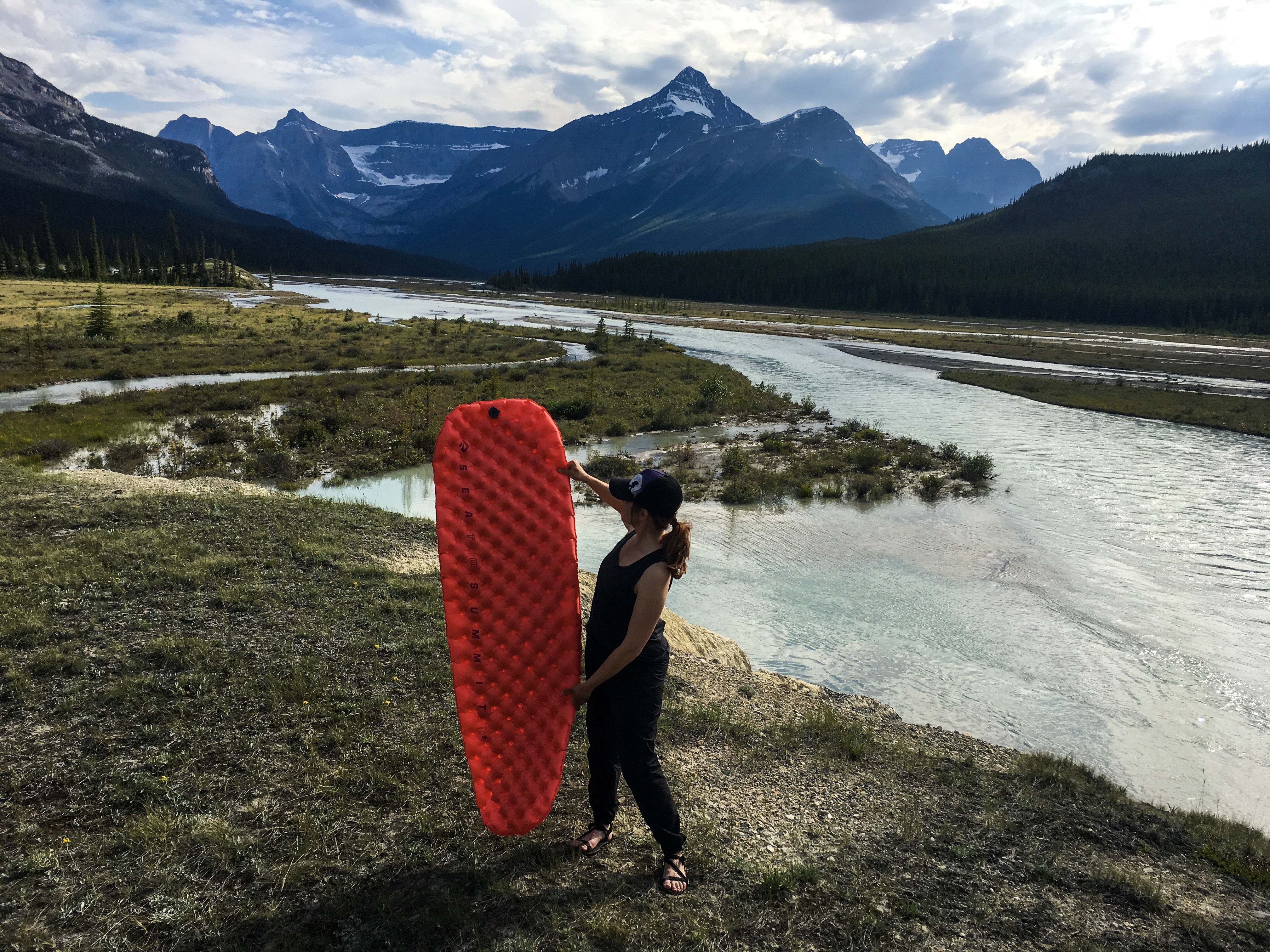Gear Review: Sea to Summit’s Ultralight Air Vs. Women’s Ultralight Insulated Air Sleeping Mats
Battle of the sleep mats! I put two of Sea to Summit’s sleep mats to the test on Canada’s Great Divide Trail, starting with the Ultralight Air mat for the 270 miles, then swapping in the Women’s Ultralight Insulated Air mat for the remaining 315 miles.
Sea to Summit UltraLight Air Sleeping Mat
MSRP $109.95
Weight 13.9 oz
Thickness 2 inches
R Value 0.7
This mat is a good choice for the hiker who checks the weight of their gear, but isn’t ready to give up the cushy comfort of a full-length inflatable sleep pad.
The air-sprung cells help the mat retain a softer texture when inflated, compared to other mats I’ve used. However, this softer texture also meant I needed to spend a little extra time preparing my sleep site, ensuring that no rocks or pine cones were lurking underneath, as they were easily felt through the mat.
This mat does have a relatively low R-value of 0.7, meaning that users would likely find this mat more suited for trails with mild or warm nighttime temperature. While using with a sleeping quilt, I found the R-value sufficient until the temperatures dropped a few degrees below freezing. After that point I was able to feel the cold from the ground seeping through the mat, although still warmer than not using a mat.
It deflates rapidly, allowing for an easy pack up with no need to squeeze out extra air as it’s rolled up; perfect for groggy early morning starts.
With a super-small packed size (3 x 6.5 inches) I was easily able to stuff this mat into the bottom of my pack and use the extra room to pack out town food. Bonus!
Sea to Summit Women’s UltraLight Insulated Air Sleeping Mat
MSRP $139.95
Weight 15.9 oz
Thickness 2 inches
R Value 3.8
Shaped specifically for women, this mat is a little narrower at the shoulders and adds a bit of extra width at the hips and knees. It also has a little extra insulation added in, making it a great three-season choice.
The additional insulation provided a bit of a firmer texture when compared to the UltraLight Air mat. I could side sleep comfortably without feeling that my hip was pushing through to the ground.
The additional two-ounce weight penalty (compared to the UltraLight Air) proved its worth with a significantly higher R-value. Even on nights where it was chilly enough for the rain to turn to sleet and hail, I did not feel any cold spots coming though this mat.
Like the UltraLight Air, it offers a fast and easy deflation and fits easily in the provided stuff sack.
All that extra insulation comes with some extra size, packing down to 3.75 x 9 inches. It was a significant enough of an increase in packed size compared to the UltraLight Air that I mourned the lost space in my pack.
Airstream Pumpsack
Both mats use the Airstream Pumpsack to inflate, a feature that I’ve quickly come to appreciate after long days hiking at elevation.
The Airstream Pumpsack is sewn into one end of the stuff sack and opens up to become a pump. Blowing into one end, the Pumpsack inflates, allowing you to squeeze the air directly into the mat.
This feature allows for faster inflation of the mats, but even better, it eliminated the shortness of breath that comes with inflating a mat by mouth. This featured transformed what was previously my least favorite part of setting up camp into a much more enjoyable experience.
Which Mat Should I Choose?
This answer is highly dependent on the circumstances of use. If shaving grams off your base weight is top of mind and your intended trail is in a milder climate, the UltraLight Air is a great choice. Comparatively, the UltraLight Insulated Air is an ideal choice if you’re expecting more adverse weather or intend to camp at altitude. Either way, these durable and well-designed mats are a good option for the long-distance, weight-conscious backpackers.
Shop the Sea to Summit Women’s Ultralight Insulated Air Mat HereShop the Sea to Summit Ultralight Air Mat Here
These items were donated for purpose of review.
This website contains affiliate links, which means The Trek may receive a percentage of any product or service you purchase using the links in the articles or advertisements. The buyer pays the same price as they would otherwise, and your purchase helps to support The Trek's ongoing goal to serve you quality backpacking advice and information. Thanks for your support!
To learn more, please visit the About This Site page.






